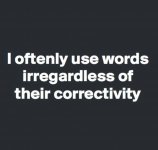Spiderman,
Let's talk about something here that has intrigued me for a long time. It concerns arriving at the proper "ghost ball" location to pocket the ball.
I have never been able to "see" a ghost ball down there next to the object ball inline to the pocket. I've done as the experts said do, place another object ball next to the object ball to be pocketed in a line to the pocket. Remove the extra object ball and practice visualizing it still being there and send the cueball to it and you will make many shots.
I, in 50 years of playing, was lousy at visualizing an invisible ball down there. So I looked around for other ways to accomplish putting the cueball into that required ghost ball location. The Mosconi fraction concepts always made me hit the cuts too thick, same with contact point stuff. I'm not mentally quick enough to utilize the Poolology method because I cannot calculate math that quickly. I know it works for a lot of people who are very smart with math (which I am not).
So I ended up using CTE.....which did everything in a precise repeatable manner to send that cue ball absolutely down the table or across the table to that ghost ball location.
Isn't that what ALL AIMING METHODS wind up doing? Sending the cueball to that invisible "ghost ball" location?? After all, if the cueball doesn't arrive at that ghostball location then the ball will not be pocketed cleanly...right?
So our discussions here in the past have really all been about what METHOD we will use to ARRIVE AT THAT GHOST BALL LOCATION in the most dependable and efficient manner. Am I correct on that?
Isn't that all ANY method of aiming or alignment (CTE, ghost ball, Poolology, contact points, etc. etc.) tries to really do after we cut through all the likes, dislikes, personalities, and stuff?
What is your opinion on these observations of mine ?
Regards,
Lowenstein
(other comments from other players are welcome, this isn't some kind of "secret" thread just for Spider)
Let's talk about something here that has intrigued me for a long time. It concerns arriving at the proper "ghost ball" location to pocket the ball.
I have never been able to "see" a ghost ball down there next to the object ball inline to the pocket. I've done as the experts said do, place another object ball next to the object ball to be pocketed in a line to the pocket. Remove the extra object ball and practice visualizing it still being there and send the cueball to it and you will make many shots.
I, in 50 years of playing, was lousy at visualizing an invisible ball down there. So I looked around for other ways to accomplish putting the cueball into that required ghost ball location. The Mosconi fraction concepts always made me hit the cuts too thick, same with contact point stuff. I'm not mentally quick enough to utilize the Poolology method because I cannot calculate math that quickly. I know it works for a lot of people who are very smart with math (which I am not).
So I ended up using CTE.....which did everything in a precise repeatable manner to send that cue ball absolutely down the table or across the table to that ghost ball location.
Isn't that what ALL AIMING METHODS wind up doing? Sending the cueball to that invisible "ghost ball" location?? After all, if the cueball doesn't arrive at that ghostball location then the ball will not be pocketed cleanly...right?
So our discussions here in the past have really all been about what METHOD we will use to ARRIVE AT THAT GHOST BALL LOCATION in the most dependable and efficient manner. Am I correct on that?
Isn't that all ANY method of aiming or alignment (CTE, ghost ball, Poolology, contact points, etc. etc.) tries to really do after we cut through all the likes, dislikes, personalities, and stuff?
What is your opinion on these observations of mine ?
Regards,
Lowenstein
(other comments from other players are welcome, this isn't some kind of "secret" thread just for Spider)
